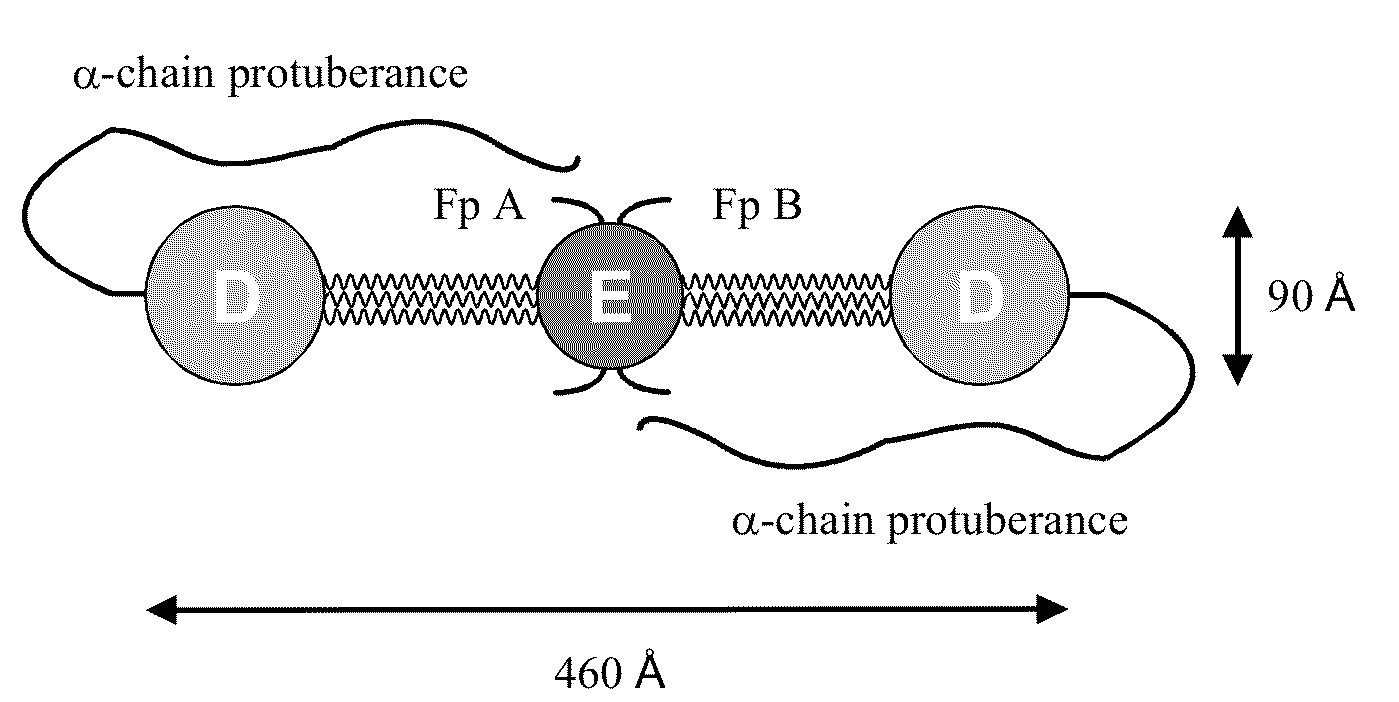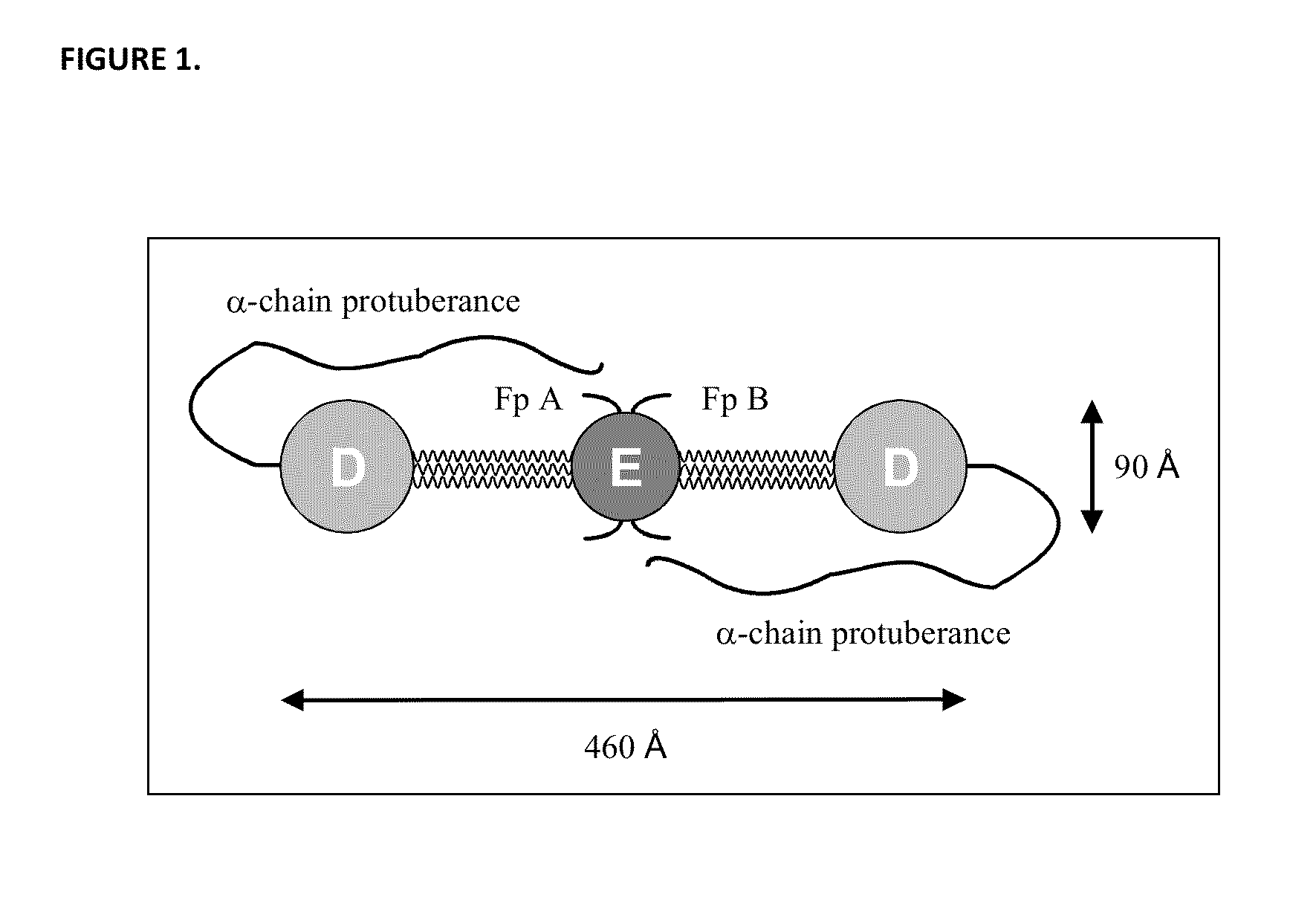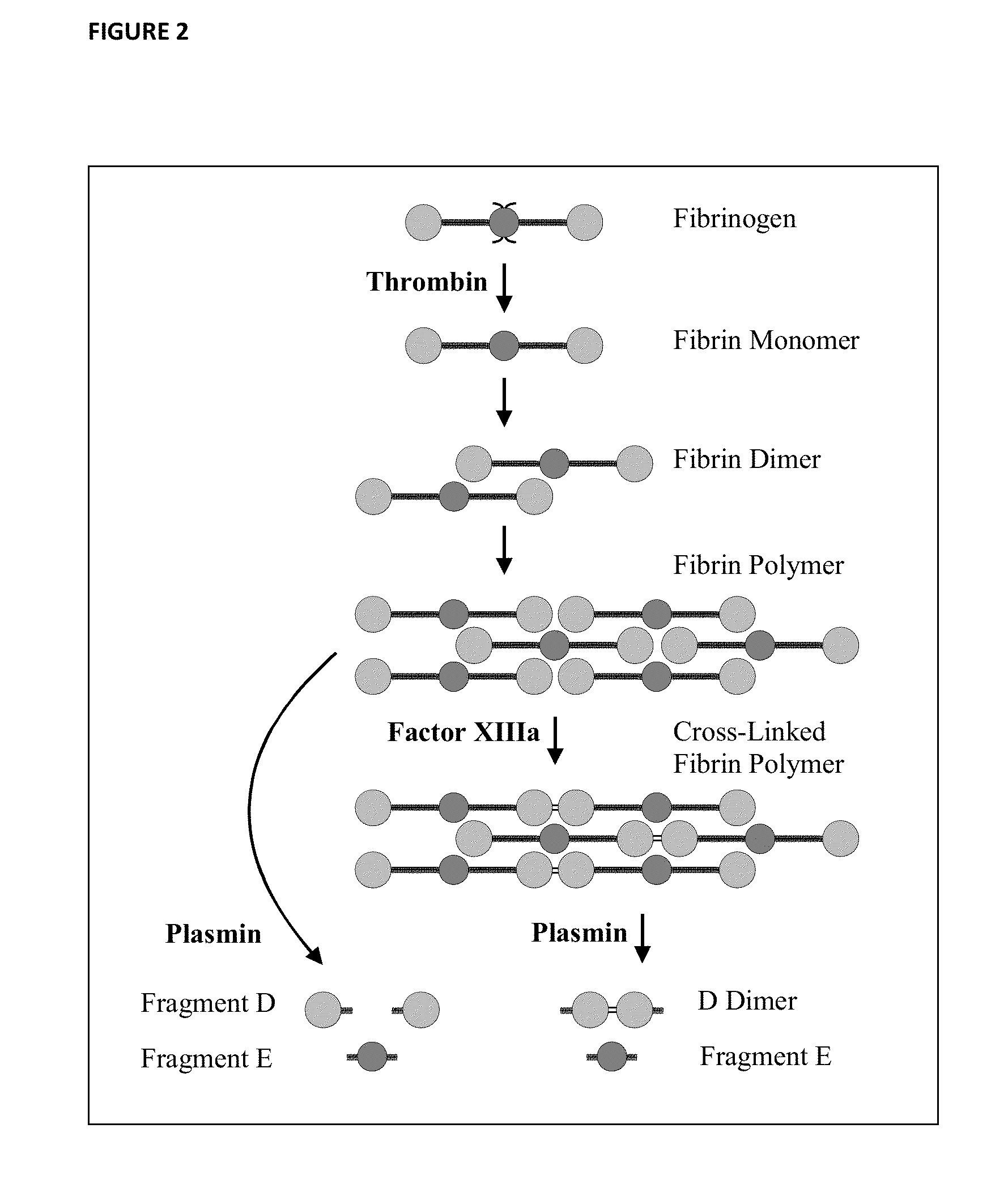Fibrinogen Assay
- Summary
- Abstract
- Description
- Claims
- Application Information
AI Technical Summary
Benefits of technology
Problems solved by technology
Method used
Image
Examples
example 1
[0093]The samples tested are enumerated in Table 1. After solubilization to approximately 10 mg / mL fibrinogen / fibrin concentration, the samples were further diluted in solubilization buffer to optimize sample protein concentrations for SDS-PAGE. Samples were then loaded onto a 4-12% SDS-polyacrylamide gel at final fibrinogen / fibrin amounts shown in Table 1. Proteins were then subjected to gel electrophoresis using standard laboratory techniques. SDS-PAGE was run at 125 volts until the dye-front reached the foot of the gel. After electrophoresis, the proteins were transferred onto a protein-binding membrane (e.g. nitrocellulose) using standard laboratory techniques.
[0094]After transfer, the membrane was incubated in blocking solution (e.g. casein and / or detergent containing solution, as known in the art) to prevent non-specific binding. The nitrocellulose membrane was then rinsed and incubated at ambient temperature in a monoclonal antibody (primary antibody, ...
example 2
[0100]A rapid fibrinogen assay was developed utilizing a dot blot immunoassay procedure. The gel electrophoresis step of the above Western blot procedure is omitted, with the approach based on large proteins in the sample being adsorbed onto the membrane, while small molecules like FpA washed away prior to treatment with the anti-FpA antibody. A similar immunoblotting procedure was then followed as described below.
[0101]The samples tested are enumerated in Table 2. A 1.5 cm×1.5 cm array of squares was drawn on nitrocellulose protein-binding membrane. After solubilization, a suitable volume (e.g. 2 μL) of sample or control material was applied to the center of each square. The sample or control were allowed to completely dry on the membrane. The nitrocellulose membrane was then incubated in blocking solution to prevent non-specific binding.
[0102]The membrane was rinsed and then incubated in a monoclonal antibody (primary antibody, [clone 1F7]) solution with specif...
PUM
| Property | Measurement | Unit |
|---|---|---|
| Mass | aaaaa | aaaaa |
| Mass | aaaaa | aaaaa |
| Mass | aaaaa | aaaaa |
Abstract
Description
Claims
Application Information
 Login to View More
Login to View More - R&D
- Intellectual Property
- Life Sciences
- Materials
- Tech Scout
- Unparalleled Data Quality
- Higher Quality Content
- 60% Fewer Hallucinations
Browse by: Latest US Patents, China's latest patents, Technical Efficacy Thesaurus, Application Domain, Technology Topic, Popular Technical Reports.
© 2025 PatSnap. All rights reserved.Legal|Privacy policy|Modern Slavery Act Transparency Statement|Sitemap|About US| Contact US: help@patsnap.com



